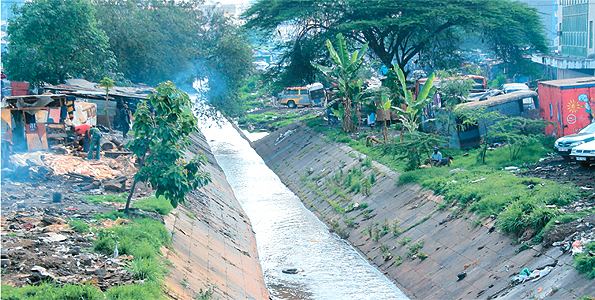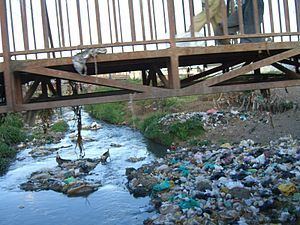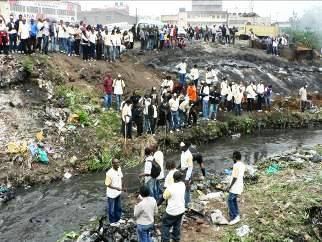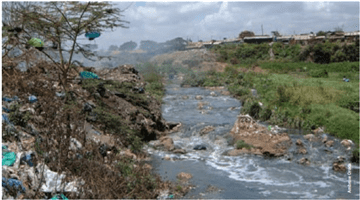 | ||
Nairobi River is a river flowing through the Kenyan capital Nairobi. It is the main river of the Nairobi river basin, a complex of several parallel streams flowing eastwards. All of the Nairobi basin rivers join east of Nairobi and meet the Athi River, eventually flowing to the Indian ocean. These rivers are mostly narrow and highly polluted, though recent efforts have seen fruitful gains in cleaning up the river.
Contents
The main stream, Nairobi River, bounds the northern city centre, where it is partly canalized.
Wendy nazar part en live au mus e nairobi river
Tributaries
Nairobi River has several tributaries, including (in descending order from north to south):


Motoine River flows to the Nairobi Dam, an artificial lake meant to provide drinkable water for residents of Nairobi.
Further onwards the stream continues as Ngong River.

Gathara-ini Stream originates in marshes in the lower reaches of Aberdare mountains and flows through human settled areas. The stream experiences different impacts originating from anthropogenic sources along the channels and in the catchment. In the upper sections of Kiambaa and Kanunga areas, the stream passes through swampy and marshy areas, with subsistence agriculture and human settlement being the main types of land use. In midsections of Kiambu, extensive coffee estates and intensive mixed farming are the major forms of land use.

In the lower sections of Githurai and Zimmerman, the stream is characterized by coffee farming, intensive mixed farming and some industries such as Kamiti Tannery Factory. The lower stream waters are brackish and characterised by foul smell. Riverine subsistence agriculture of arrowroots and kales were common throughout the studied area. Efforts to conserve and preserve this river are yet to be initiated.

Nairobi's rivers suffer from contaminations by agriculture, slums and industrial areas. During rainy seasons the discharge tends to multiply, causing floods on low-lying riverbanks.
There is a second river called Nairobi in Kenya. It starts on Mount Kenya and is a tributary of the Sagana and then the Tana, the longest river in Kenya.
